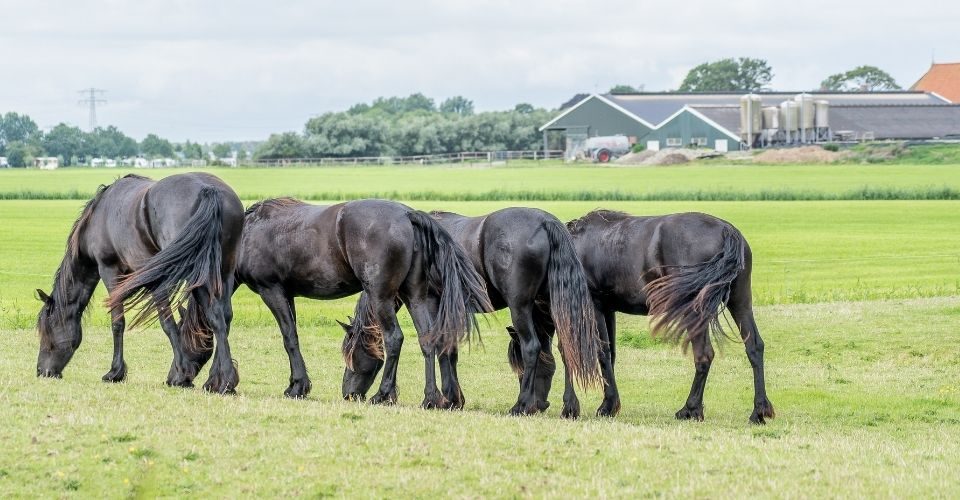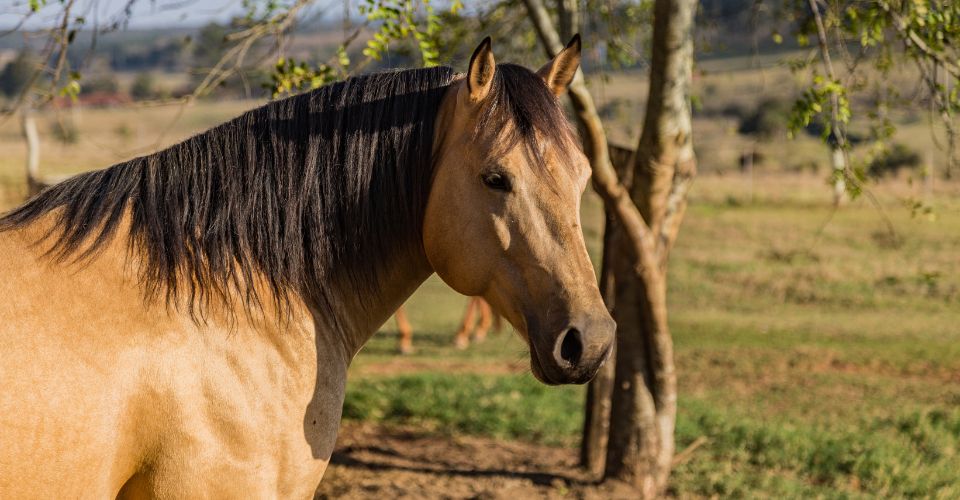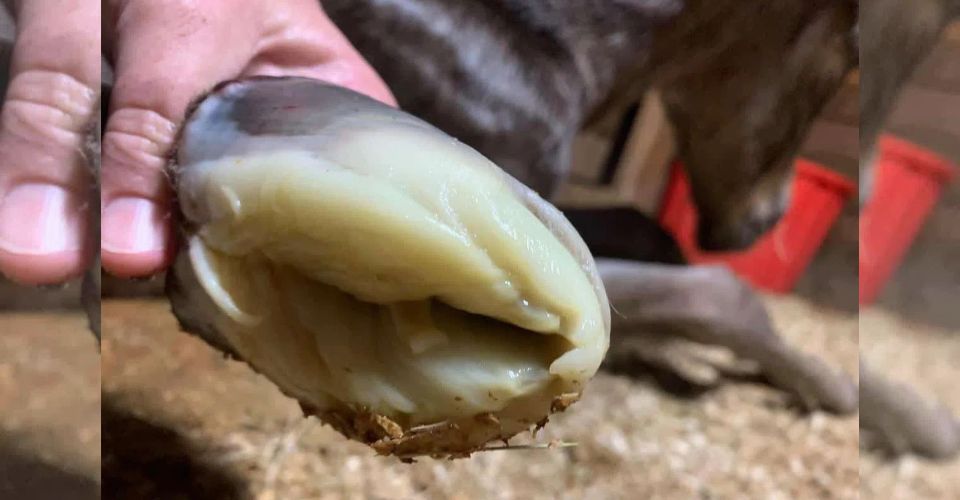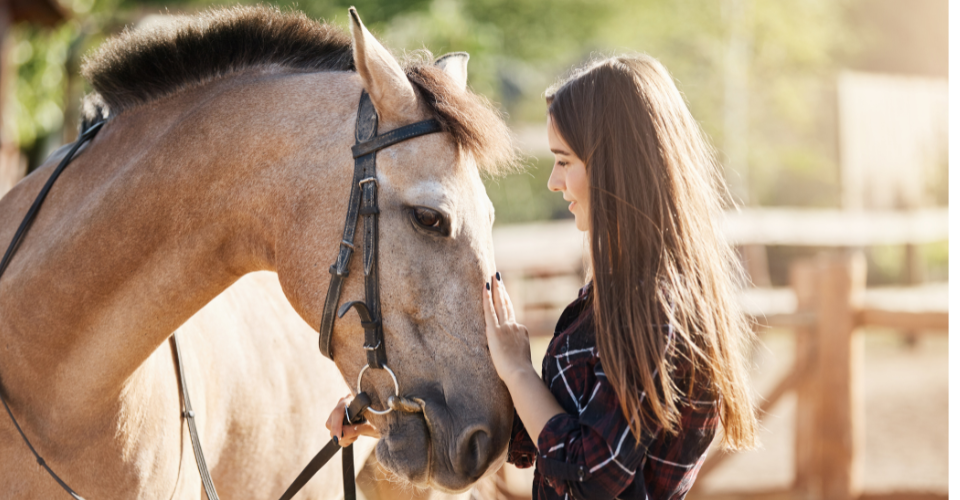The Black Mustang is a robust and elegant equine from Spain that was later brought to North America. According to the Oxford Learner’s Dictionary, the name comes from the Spanish words “mestengo” and “mostrenco,” which means wild or masterless cattle. Black Mustang horses are commonly referred to as wild horses, but they are technically feral horses because they are descended from once-domesticated horses.
The founding Mustangs were Spanish colonials, but many other breeds and types of horses contributed to the current Mustang horses resulting in a wide range of phenotypes.
They wander freely over the western United States, but they are also held in captivity and ridden like other horses. Black Mustang horses are ideal for scouting and trail riding because of their strong physique and firm hooves. If properly trained and cared for, a black Mustang may make an outstanding riding and carriage horse and can even compete in high-level events such as barrel racing, reining, endurance, and show jumping.
“Wild free-roaming horses and burros are living emblems of the historic and heroic spirit of the West, which contribute significantly to the diversity of life forms within the Nation and better the lives of the American people,” stated the United States Congress in 1971. The Bureau of Land Management (BLM) now protects the free-roaming population of Mustang Horses in the United States.
History, Ancestry & Development
Little has been discovered about the ancient Mustang breed. However, genetic evidence suggests that it is derived from Spanish horses. During the 16th century, Spanish Conquistadors brought native Spanish horses to the North American continent.
The modern-day Mustang has numerous separate breeding populations that are genetically distinct from one another and have diverse characteristics that may be traced back to certain herds. Assorted ranch horses who fled to or were turned out on public lands, as well as stray horses employed by the United States Cavalry, all contributed genetically to today’s free-roaming Mustang populations.
These recently introduced horses had played an important part in the Spanish conquests and were perhaps the region’s first equines. Following the conquests, these horses remained in North America and began mating with indigenous equine species, especially the Barb, Jennet, and Andalusian breeds, marking the beginning of the creation of the modern Mustang breed.
In this viewpoint, it’s clear that modern-day Mustangs are descended from Spanish-tamed horses who fled into the wild. Because the two breeds—Tarpan and Przewalski, are the only two lineages ever found as truly “wild” horses, many wildlife management organizations, both then and now, began referring to
them as “feral” rather than “wild.” Nonetheless, this classification sparked numerous debates among horse specialists.
The American Mustang Association (AMA) was formed in 1962 in San Diego, California, to document and preserve the pedigrees of Mustang horses. With this viewpoint, the newly established Mustang association began comparing the conformations and morphological criteria to maintain the original Spanish horses’ basic features.
They include a well-proportioned physique with a clean, elegant head with a broad forehead and tiny snout. The profile of the face can be either straight or somewhat convex. The shoulder should be “long and sloping,” and the withers should be modest in height. A short back, deep girth, and muscular coupling across the loins are all considered ideal by the standard.
The croup is not excessively flat or goose-rumped, yet it is rounded. The tail is placed low. Straight and sound legs are essential. Hooves are thick and round. Horses of the Spanish breed are particularly prone to dun color dilution and primitive markings.
Some domestic horse breeders believe the west’s Mustang herds to be inbred and of poor quality. Supporters of the Mustang, on the other hand, claim that the horses are only tiny because of their difficult living conditions and that natural selection has wiped out many characteristics that contribute to frailty or inferiority.

Behavior & Social Life
Black Mustang horses, like all other Mustangs, are found in herds of mares and foals, generally led by a single stallion. Young males and adult stallions that lack the capacity or stature to compete with other mares form small bachelor groups in the competition.
Survival of the fittest is the rule. Only the strongest survive and are permitted to lead the group; thus, competent males have an intense rivalry. The group’s leader must keep an eye out for potential rivals and expel them if any are found. The loser, on the other hand, ultimately departs, and the winner takes over the herd.
Males frequently fight, attacking with the forefeet or kicking with the rear feet are common. Males have been known to head-butt, wrestle, and even bite their opponents. Those stallions that arrive as outsiders are typically stronger than the leading stallion and can push and rear up the leading stallion.
Wounds produced by teeth and hooves and shattered limbs are not uncommon amongst the injured. Fighting to death is uncommon, but death due to serious wounds can occur.
Characteristics
Black Mustang horses, like all other horses, are measured in hands. They stand between 14 – 15 hands tall, which is equivalent to 56 – 60 inches (140 – 150 centimeters). According to the America’s Mustang program, they weigh about 800 pounds (360 kg).
Mustangs come in a wide spectrum of hues, and their coats display the complete range of colors seen in all horses, according to Oklahoma State University. Typically, they are bay, a reddish-brown tint, or sorrel, a chestnut color. They come in a range of colors and patterns, patches, spots, and stripes.
A Black Mustang horse has been reported reaching speeds of 55 mph (88 km/h) over a short distance, most Mustang horses can run or gallop at rates of 25 – 30 mph (40 – 48 km/h).
Habitat & Diet
Mustangs are found in the grasslands of the western United States. They primarily consume grass and bushes. Seeps, springs, streams, and lakes provide them with water. Plant food is consumed by adults for 5 to 6 pounds per day. A mare is the leader of each herd of horses, it is also in charge of leading the family to food and water.
The “wild” horse is permitted to roam freely on 26.9 million acres of public land by the US Bureau of Land Management. This area is divided into ten herd management regions in Nevada, Arizona, Colorado, California, Montana-Dakotas, Idaho, Utah, New Mexico, Wyoming, and Oregon-Washington. Black Mustang horses can also be found on the Atlantic coast and islands like the Sable, Shackleford, and Assateague.
Can a Black Mustang Be Tamed?
Black Mustang horses are notorious for their wild temperament, yet they can be tamed and ridden in the same way that other horses can. If they are taken from the wild rather than being reared in custody, this procedure will take longer because they are not accustomed to being handled by people.
From the 1850s until 1900, cowboys in the Wild West caught, tamed, and sold Mustangs. These cowboys were named the “Mustang runners.”
Where to Find a Black Mustang?
Mustang horses may travel hundreds of miles in search of food, water, and shelter. In the western United States, Black Mustang horses can be seen on public lands. For the sake of safety, the herd sticks close together. The stallion is the band’s leader and generally stays at the rear.
Friends and Foes
Wolves and coyotes can’t kill a Black Mustang horse because they’re too huge for being their prey. Mountain lions and black bears can kill sick or weak horses. Black Mustang horses, like other horses, escape their attackers by herding and running.
Humans, on the other hand, are both friends and foes of the black Mustang horses.
Currently, less than 20,000 black Mustang horses are grazing on public lands in the West. According to the Bureau of Land Management, the area can only support around 24,000 horses. People and the Wild Horses and Burro Freedom Alliance, on the other hand, believe that continuing to reduce the horse population will result in extinction.
Explore more on Horse care: How Much Do Horses Weigh?





